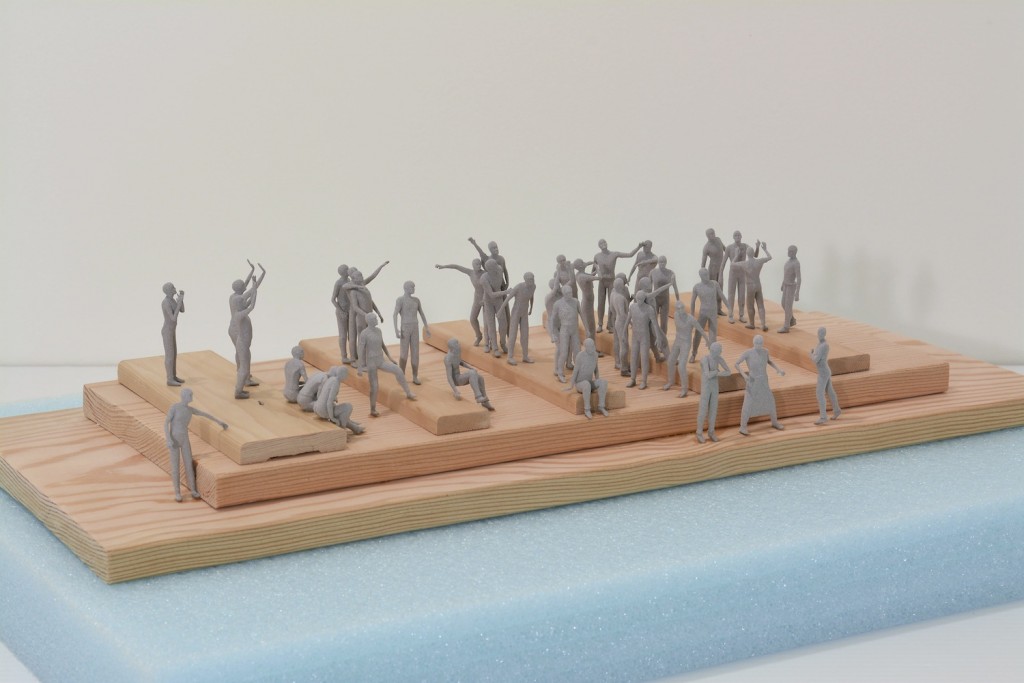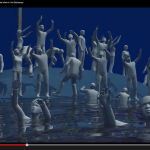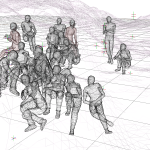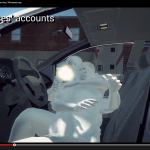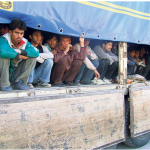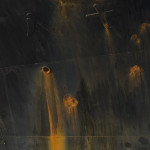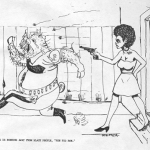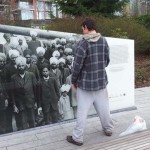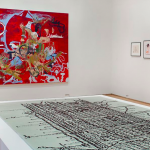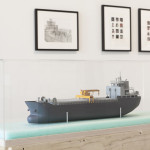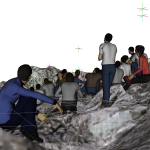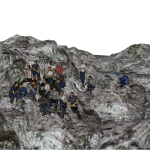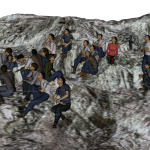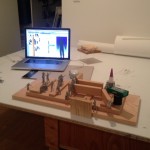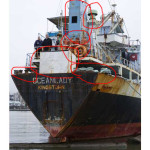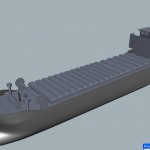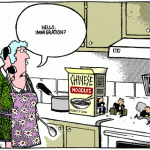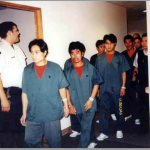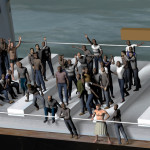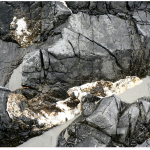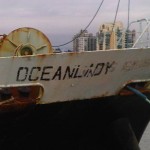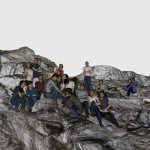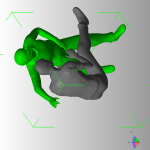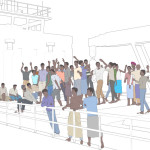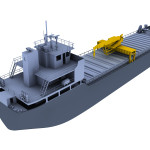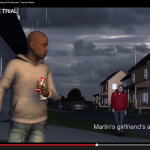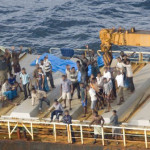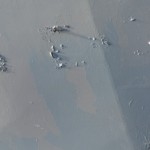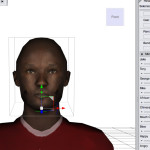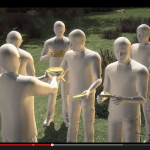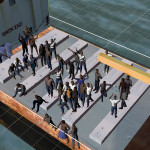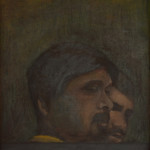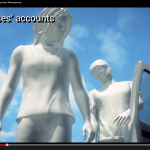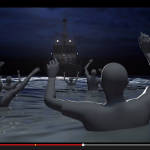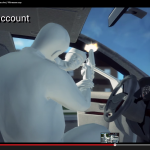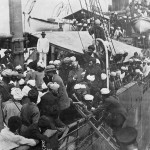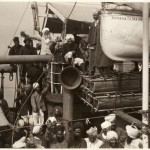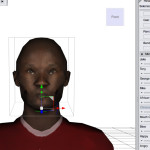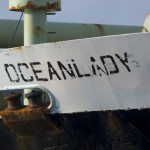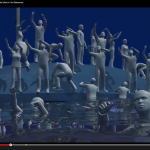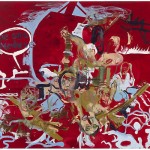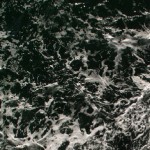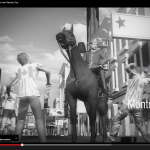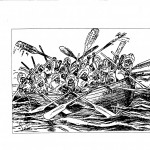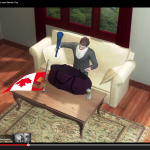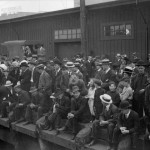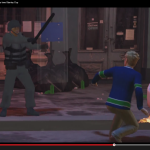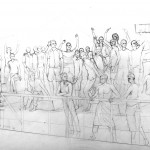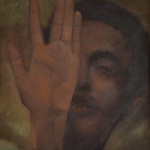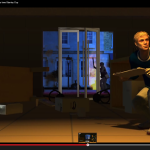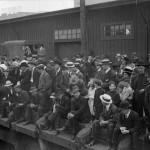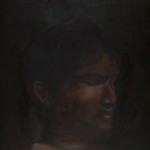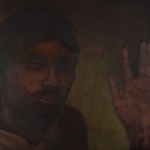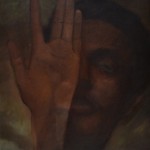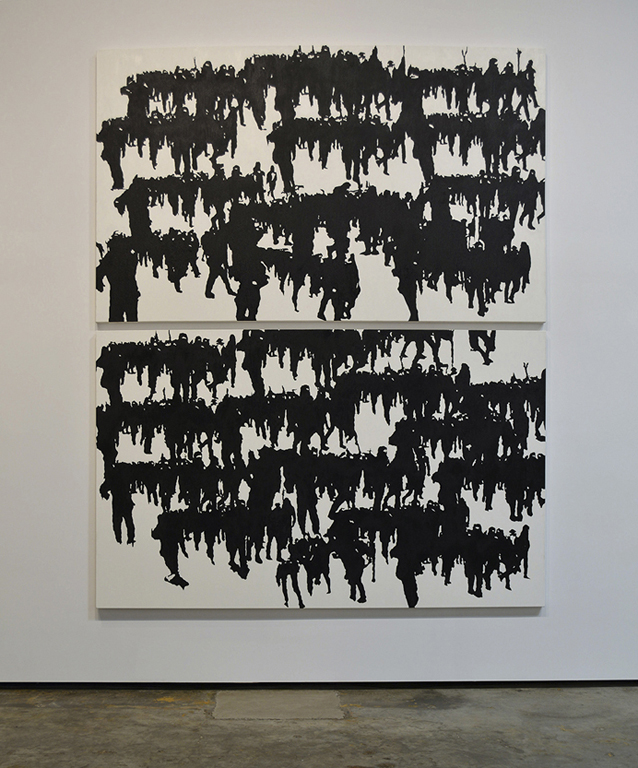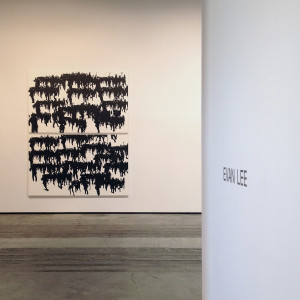Figures on a Deck from Untitled Migrant Ship Re-Creation Project
2009/2014
3D printed prototype, wood and green foam
38 figures, each figure approximately 2 inches in height.
In 2009, the artist began a re-creation of a press image depicting the arrival of the Sri Lankan migrant ship, the MV Ocean Lady at the west coast of Canada. This work was realized in many different forms, but most notably as a 3D re-creation and 3D printed models. In addition to photographs, drawings, paintings and other works, there is a web archive of this project.
It is with this project that the artist began looking at how migration has been depicted in media and in history. This subject concerns the complexities and challenges of immigration and its history in Canada, some of which were experienced directly by the artist’s family and friends.
At the moment, numerous people from Africa and the Middle East are attempting to reach Europe by sea. Many Europeans view this as problematic, leading to a strong rise in nationalism and anti-immigration rhetoric and policy. These attitudes also exist closer to home: in 2009 and 2010, two ships arrived at the coast of BC carrying Tamil asylum-seekers from Sri Lanka. Canadian authorities seized these ships and detained their crew and passengers. There has been massive public debate and speculation over the legality of their refugee claims and the practice of human smuggling, and a climate of xenophobia has developed amidst accusations of immigration “queue-jumping” and fears of terrorism. This has been echoed many times in Canada’s history by the arrival of: Fujianese migrants in 1999, Jewish Europeans on the MS St. Louis in 1939 and Sikhs on the SS Komagata Maru in 1914. And it is difficult to separate this history from that of slavery and colonialization.
